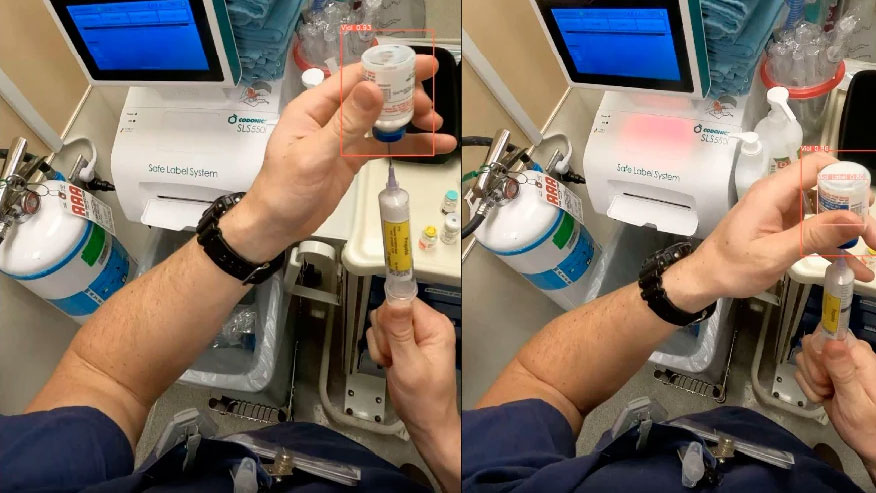
A group of researchers from the University of Washington, Seattle, USA, claim to have developed the first wearable camera system that can utlilize artificial intelligence to reduce mistakes when administering medication.
In a study published yesterday in the journal npj Digital Medicine, the researchers explained that the test results suggested that a video system recognized and identified, with high efficacy, which medications were being drawn by a practitioner.
The tests took place in a busy clinical setting with external stimuli, and the AI achieved 99.6% sensitivity and 98.8% specificity at detecting vial-swap errors.
At least one in 20 patients is affected by preventable patient harm in a clinical setting, according to the study, and drug-related errors are the leading cause, with up to 12% of these errors resulting in serious harm or death.
Drug administration errors are the most commonly reported critical events in anesthesia, and the most common cause of serious medical errors in the intensive care unit, with adverse events associated with injectable medications estimated to impact 1.2 million hospitalizations annually and cost $5.1 billion.
The AI-powered camera system could prove an essential safeguarding tool against accidental or intentional medication mix-ups.
Teaching the AI took months. The researchers collected 4K video with 60 frames per second of 418 drug draws by 13 anesthesiology providers in different operating rooms where the set-up and lighting were varied.
With cameras mounted on doctors' heads, the AI scans for visual clues to identify the medication, such as the size and shape of the vial and syringe, the color of the vial cap, and the label print size. The AI is also trained to only focus on the medications in the foreground, and ignore other vials and syringes.
Shyam Gollakota, a coauthor of the paper and professor at the UW's Paul G. Allen School of Computer Science & Engineering said:
“It was particularly challenging, because the person in the OR is holding a syringe and a vial, and you don’t see either of those objects completely. Some letters (on the syringe and vial) are covered by the hands. And the hands are moving fast. They are doing the job. They aren’t posing for the camera.”
Despite the lack of understanding and concern about how AI might come to affect our daily lives, AI has been used for good many times. Predicting wildfires in California, and saving lives by detecting skin cancer, and now incorrect medications.
Take a look at the best AI image generators.







